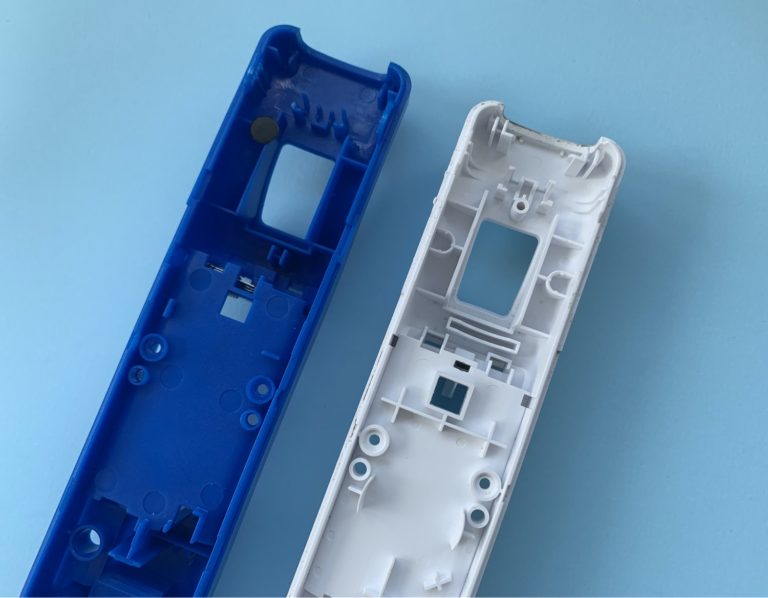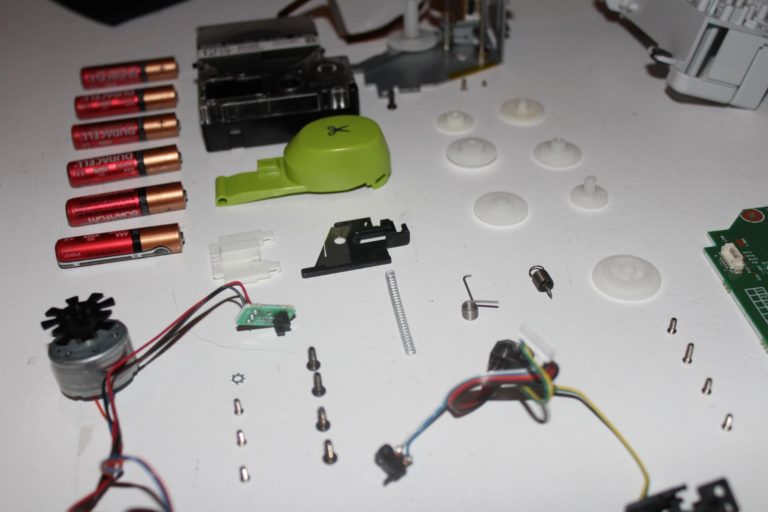In this teardown, we look inside a very special pair of headphones. We are not going to dig into its acoustics, because that’s not why it’s interesting.
Halo Sport is a wearable neurostimulation headset that accelerates improvement from movement-based training. It’s the first consumer product of its kind; neurostimulation technology has only been used in clinical and research settings previously.
To give us the inside scoop on this new technology, we’re joined by Halo Neuroscience CTO Dr. Brett Wingeier and Product Design Engineer Ian Shain. We always come away from these “insider” teardowns with so much new knowledge! If you have a product you want to share with the hardware community through teardown, get in touch with us here.

For this teardown, we’re focusing in on 3 major features of interest:
1. Electrode Design – The Halo Sport electrodes are what separates this product from a standard set of consumer electronic headphones and allows it to become a full neurostimulator.
2. Dual Band/Bridge Design – Halo Sport uses two distinct bands to help fit, and apply the proper pressure, to all head sizes.
3. Acoustically Transparent Ear Pads – A primary target user for Halo Sport is the high performance athlete. In order to allow these athletes to wear Halo Sport and still receive coaching, the Halo team developed acoustically transparent ear pads that allow sound to travel through them.
For our new readers, Fictiv is a manufacturing platform and the fastest/most efficient way to fabricate parts (including 3D printing and CNC machining). Our expertise is around the mechanical side of hardware development so for teardowns, we dig into the mechanical systems and leave the electrical analysis to our EE friends.

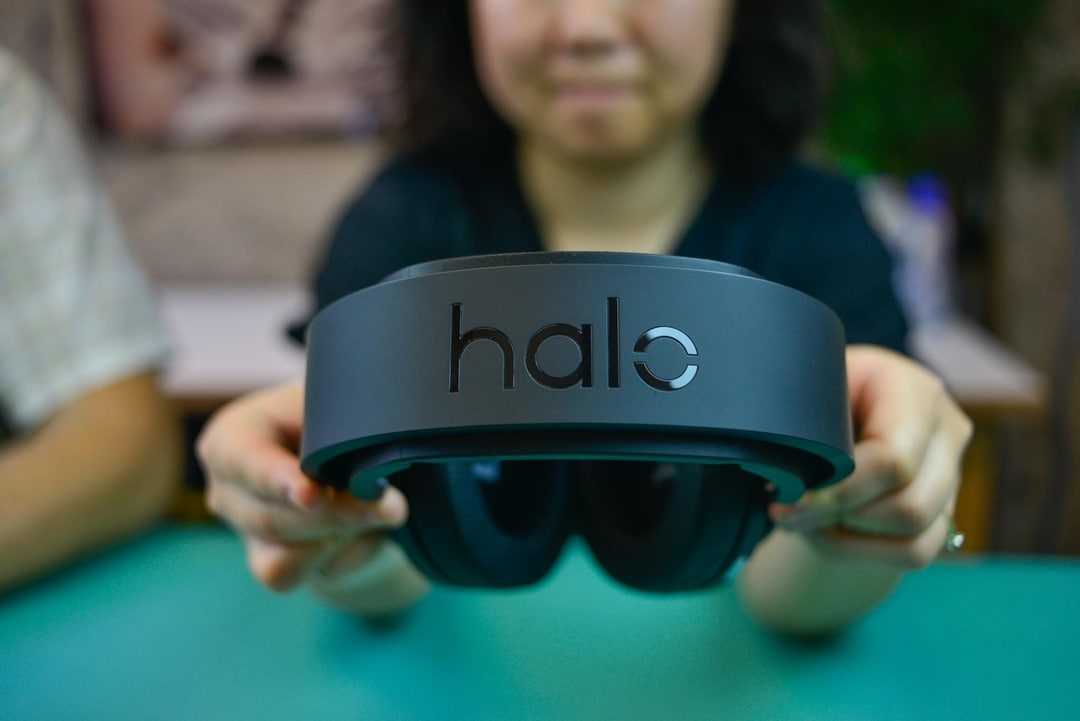

Electrode Design

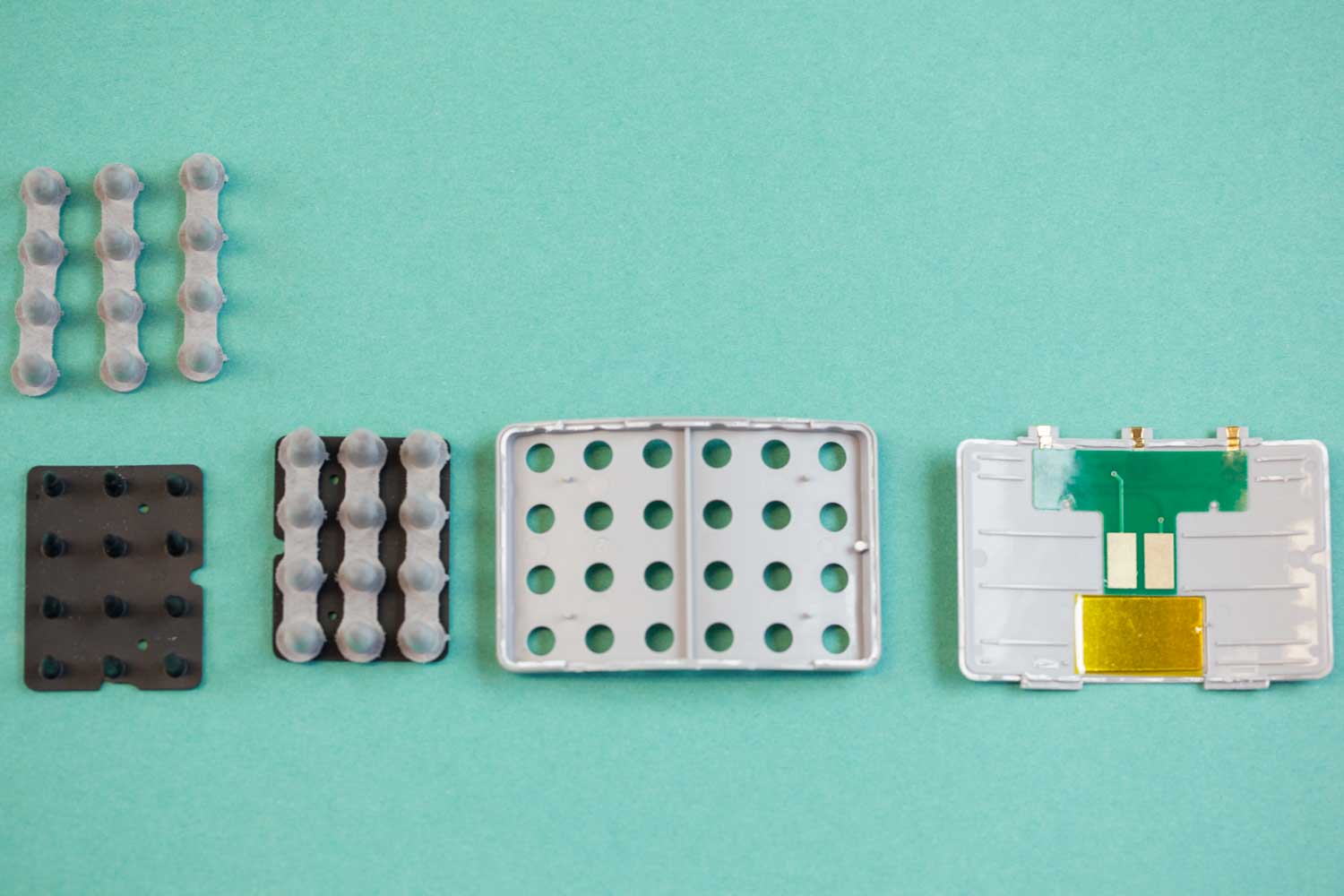
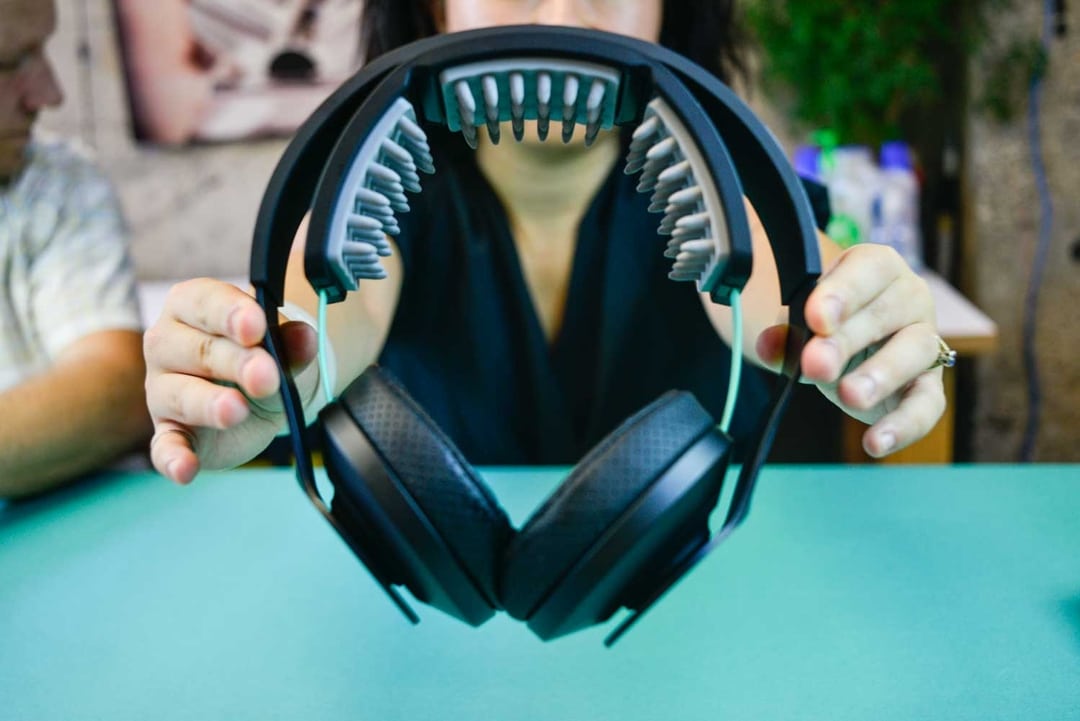
What makes Halo Sport standout in appearance from other headphones are the many nodules on the inside of the headband. These look like massaging nodules one might find on a reflexology product.
These nodules are part of three removable electrodes (also called primers), which establish the electrical path which establish the electrical path to the brain through the scalp, allowing Halo Sport to be a fully fledged neurostimulator.

The nodules are called nibs. They are made of a dense open cell hydrophilic foam. Once wet, they are conductive.

Halo developed the proprietary foam material used for their primers through lots of trial and error. They have to absorb water quickly, be flexible so they are comfortable and conforming to different head shapes, but at the same time, stiff enough to penetrate through different kinds of hair (even a mane like Troy Polamalu’s). There is no standard spec for “too pokey,” and that’s where lots of user testing inform the final decision.


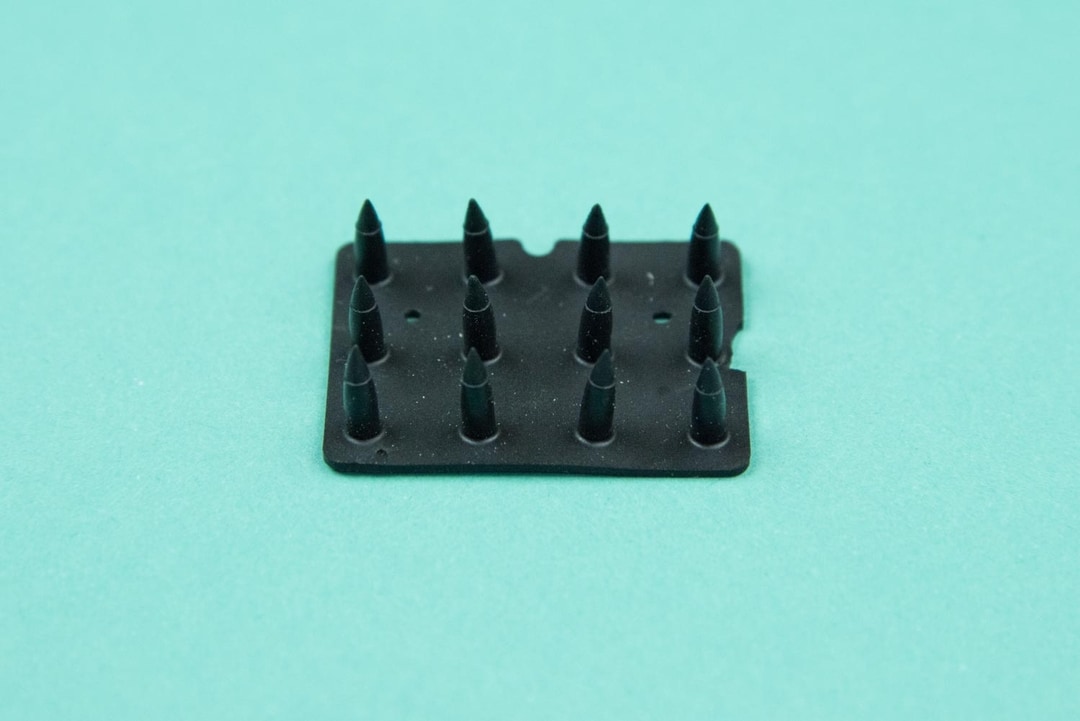
The primers sit on top of a compression molded conductive rubber component, which in itself is an array of pointy nodules. The hardness and elasticity of this component also affect how the primers feel on a user’s head.
Dual Band/Bridge Design


The outer headband’s main function is to keep the ear cans close to the user’s head. The two halves of the outer headband enclosure hide the detent mechanism for sizing adjustments between them. They also feature the most amount of snap fits we’ve ever seen!


The inner and outer headbands are only attached in the very middle, which helps the bands flex smoothly relative to each other.

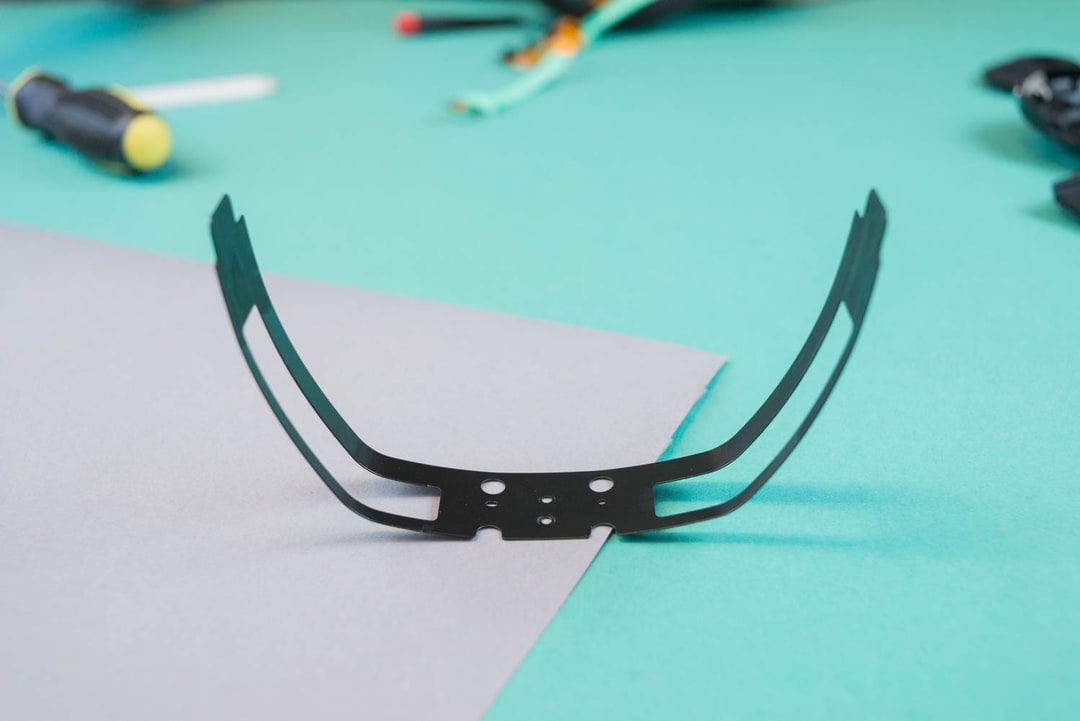
The inner headband’s main function is to ensure the electrodes keep good contact with the user’s head. A spring steel “skeleton” is responsible for just that.

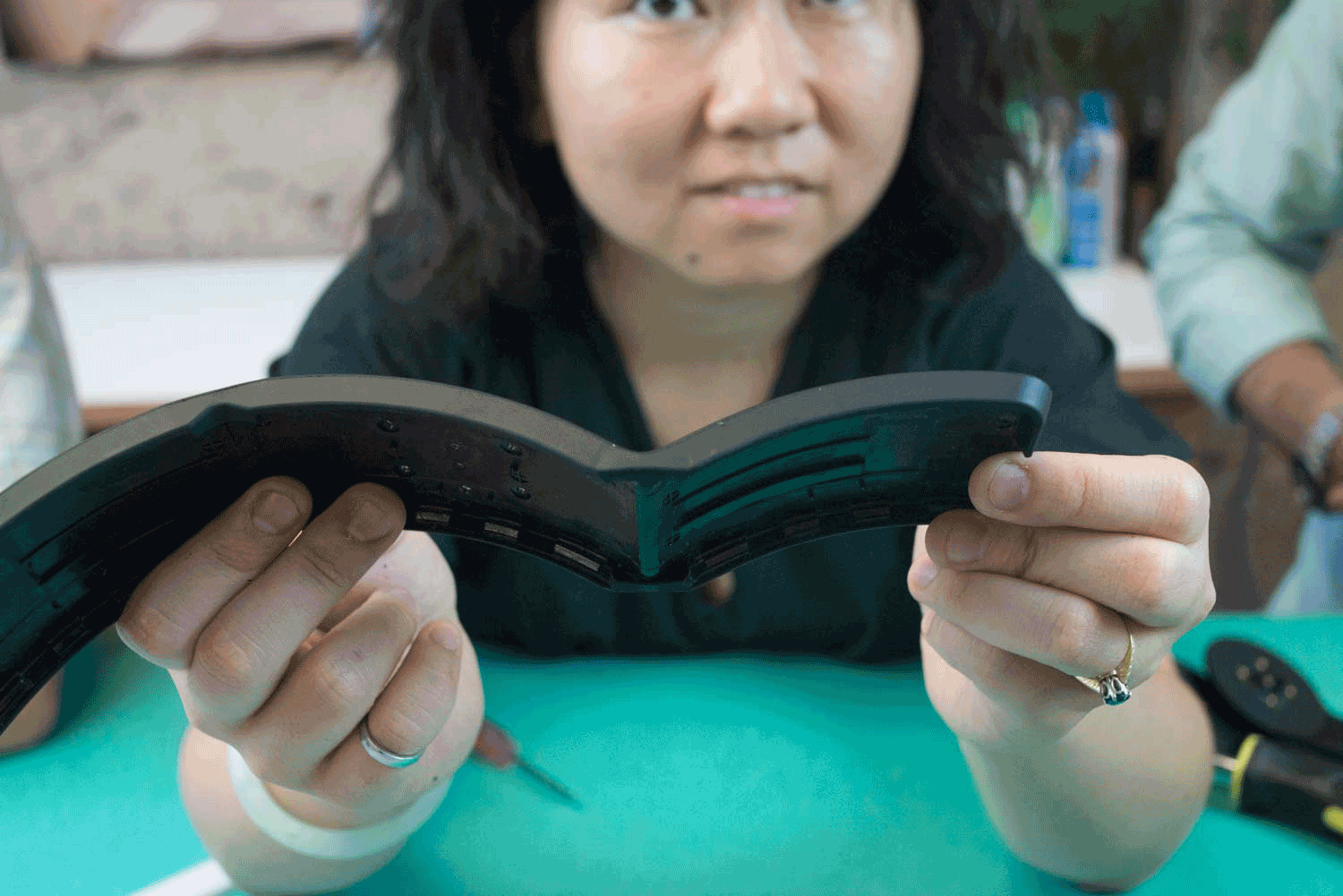
The inner band enclosure is composed of three rigid segments overmolded with an elastomer, so the inner band conforms to heads of different shapes.
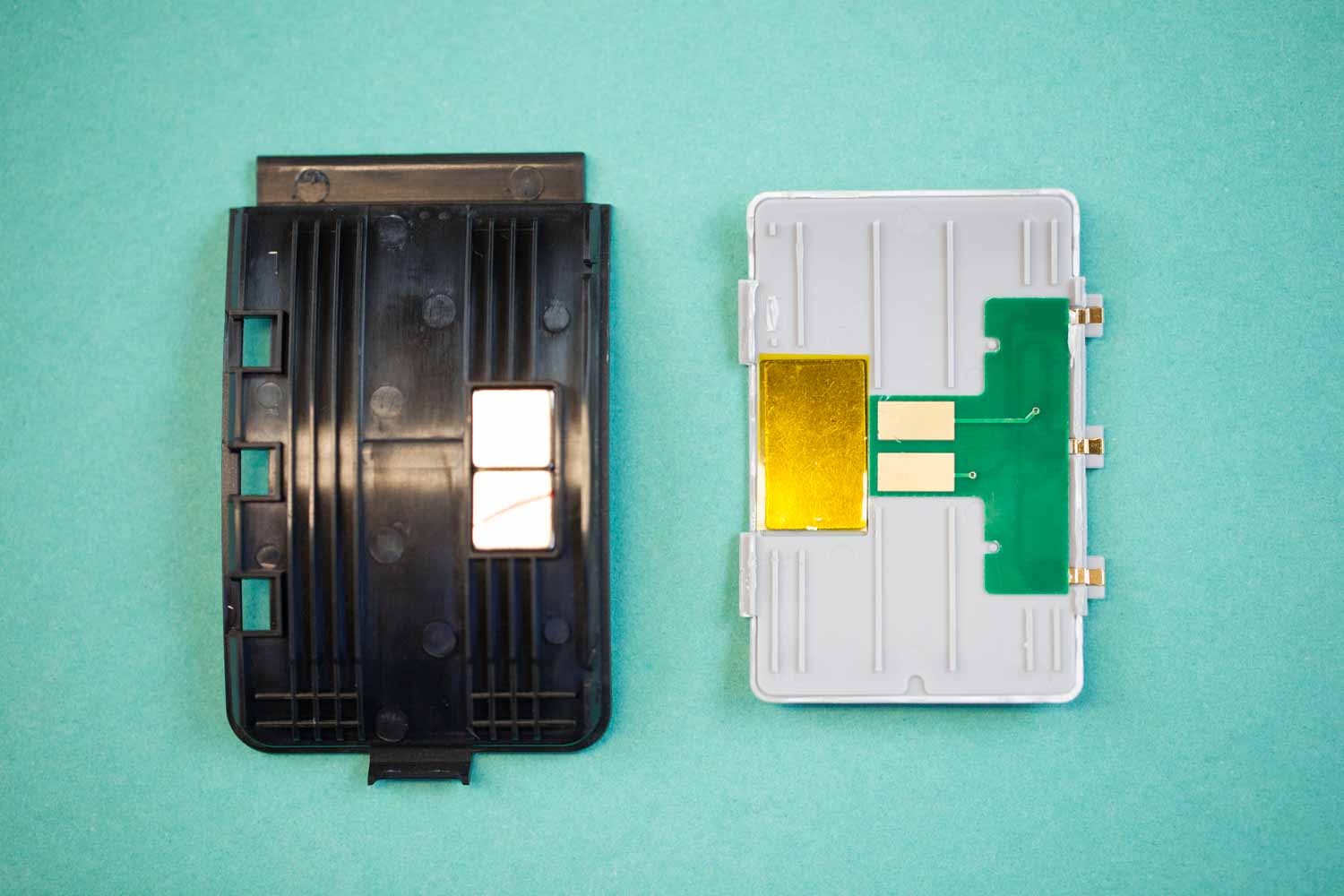
The opposing, smaller enclosures are pockets for the electrodes. Magnets are hidden inside to help secure the electrodes in place.

The opposing, smaller enclosures are pockets for the electrodes. Magnets are hidden inside to help secure the electrodes in place.

The flex cable assembly is actually composed of three flex cables. Ian and Brett told us that originally they wanted to use one long cable, but that quickly proved unwieldy. We can imagine!
Contacts with the electrodes are conductive rubber “painted” over exposed contacts in the flex. This conductive rubber, and the care taken to completely seal the exposed contacts in the middle part of the flex, is an anti-corrosion measure. Brett shared that while generous plating is often chosen as a solution here, they found carbon stands up to electrochemical corrosion orders of magnitude longer than metal if you can tolerate a few ohms’ resistance in the current path.
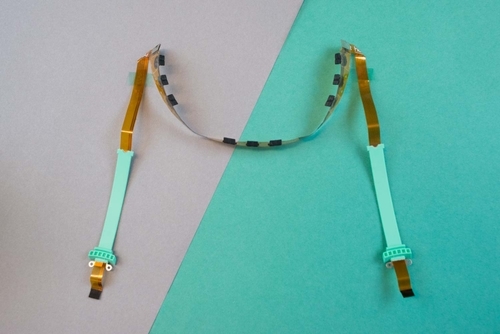
The end piece flex cables are paired with a spring steel segment and overmolded with an elastomer. The over-mold and sheet metal protect the flex cables in a low-profile way, since these segments are exposed between the inner headband and the ear cans. They slide in and out of the inner headband as one adjusts the sizing.
Acoustically Transparent Earpads

A primary target user for Halo Sport is a high performance athlete, many of whom use coaches in training. To allow a user to wear Halo Sport and still receive coaching, Halo developed acoustically transparent earpads. These are earpads that allow sound to travel through them, so the user can listen to the environment around them. Musicians also use Halo Sport to learn new pieces and practice—I wonder if some of them prefer the acoustically transparent cups as well.

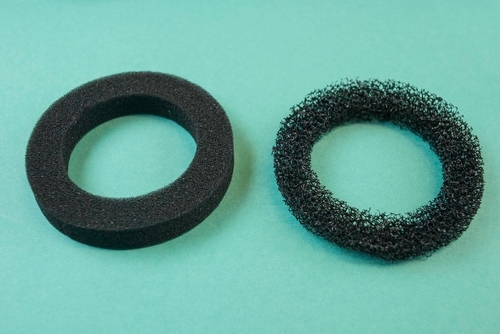
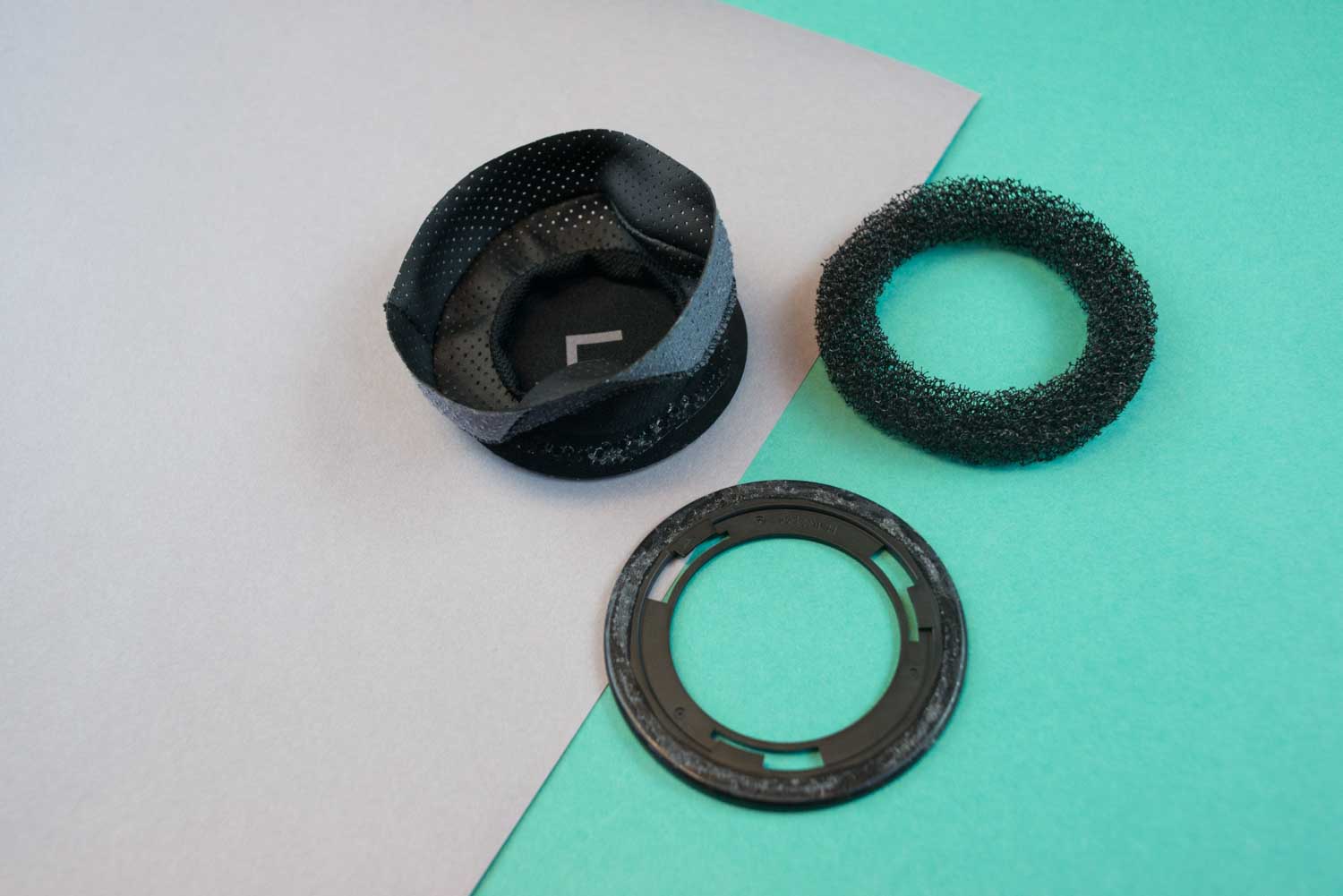
Acoustic transparency is achieved by perforating the earpad skin (made of leather-like polyurethane textiles) and using a type of sparse open cell foam for padding. It’s similar to dry-fast foams used in outdoor furniture.
A set of sound-isolating earpads are also included, for those users who wish to block out distractions. The skin of the soundproof earpads are not perforated, and the foam is higher density. This is similar to earpads you might find in a regular set of headphones.

To change the earpads, all you have to do is twist the earpad against the ear cans.

The electronics—responsible for both sound and neurostimulation—and the battery are found inside the right earcup.
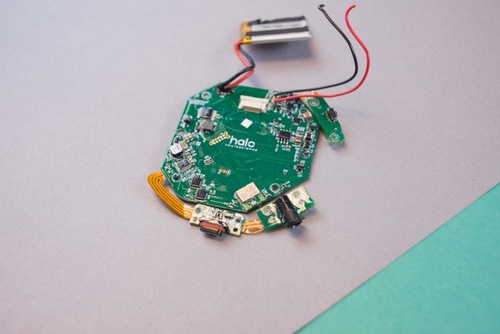
PCBA assembly is a TENS (transcutaneous electrical nerve stimulation) port. A standard electrode cable can be plugged into here for research into other current paths or for recording the timing of neurostimulation with other data collection equipment. This allows Halo Sport to be used by research facilities and labs for data collection.

The left ear can is mostly empty, aside from an aux connector PCBA.
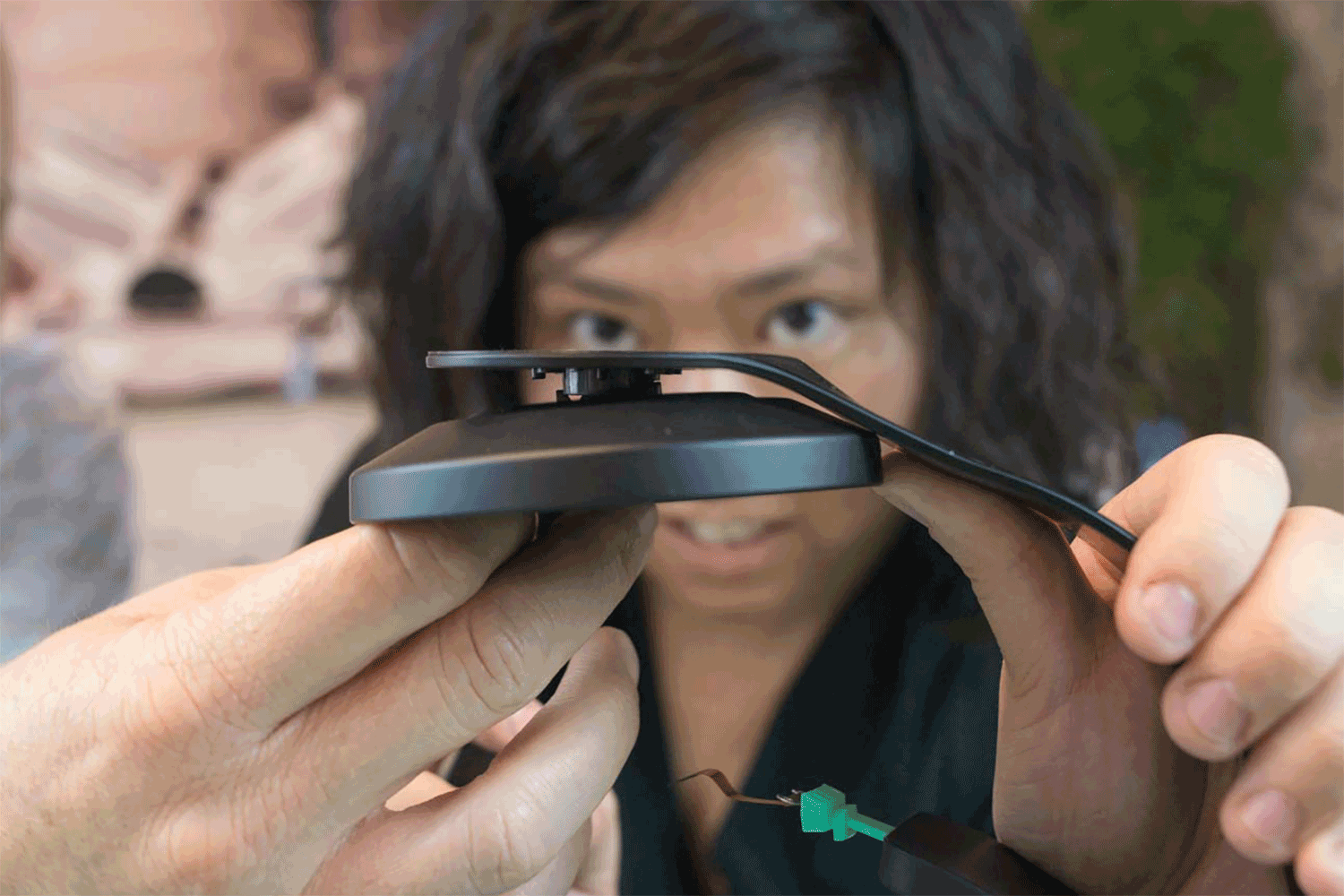
One area we really want to highlight is the swivel joint between the ear can enclosure and the outer headband, which is important for the ear cans to conform well to different head shapes. This is achieved with a special screw that has a hemispherical head, which sits inside a bowl-shaped pocket.
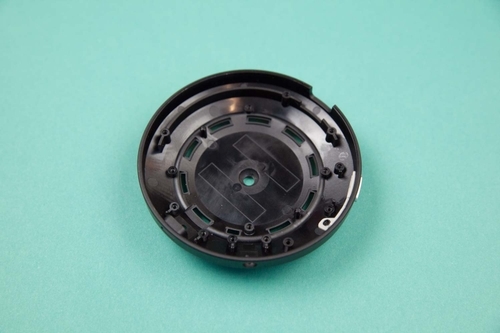

The mating ear can socket is nano-molded to the aluminum outer headband. Nano-molding is a specialized process that unlocks many possibilities in metal/plastic hybrid design. It uses a chemical etching process to create cavities and texture on the metal. Then during the injection molding process, these small cavities are filled with plastic resin, resulting in a strong bond. This process isn’t easy or cheap, but it sure is a great way to achieve a strong, low profile joint.
Main Takeaways
My favorite part about the Halo Sport headphones is that the Halo Neuroscience design team made what could have been be an intimidating device familiar by putting it into a headphone package. Everyone knows how to put on a pair of headphones and athletes and fitness enthusiasts already wear headphones when they’re working out. So putting on Halo Sport to train is pretty easy compared to our imagined alternatives… perhaps a helmet reminiscent of medical experimentation?
Muse’s LowDown Focus meditation sunglasses leveraged a similar strategy. Can you think of anything else? No, Snapchat Spectacles don’t count… people still find face cameras creepy.
It goes without saying that putting a neurostimulator into a pair of headphones will make… a more complex pair of headphones. If you’re curious how this product compares to other headphones, check out our previous teardown of Alpine headphones with Lunar, which are unique due to having bass transducers in the headband.
Brett and Ian gave us some hints as to where Halo Neuroscience is venturing next: As the science of neurostimulation advances, there are huge opportunities to expand into different types of training such as attention focus, stroke rehab, and physical therapy. As Brett put it, “the brain is a big place.” We couldn’t agree more and we can’t wait to see where this technology might go in the future.

